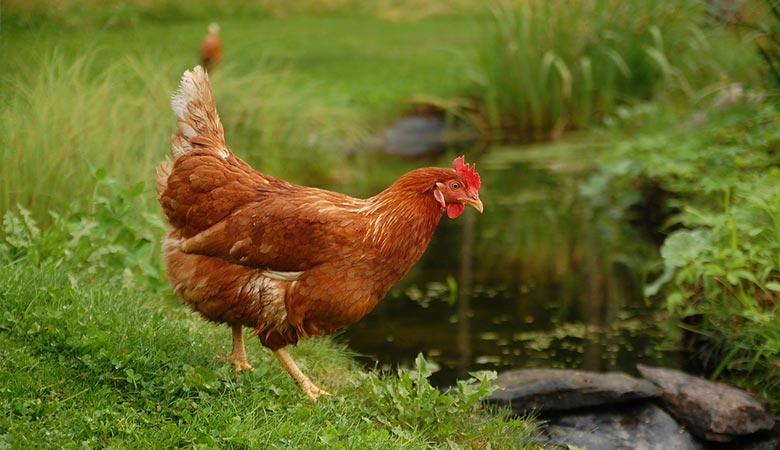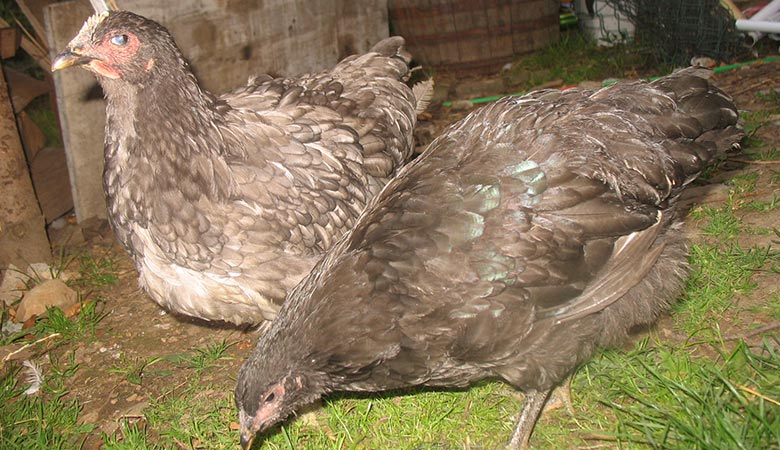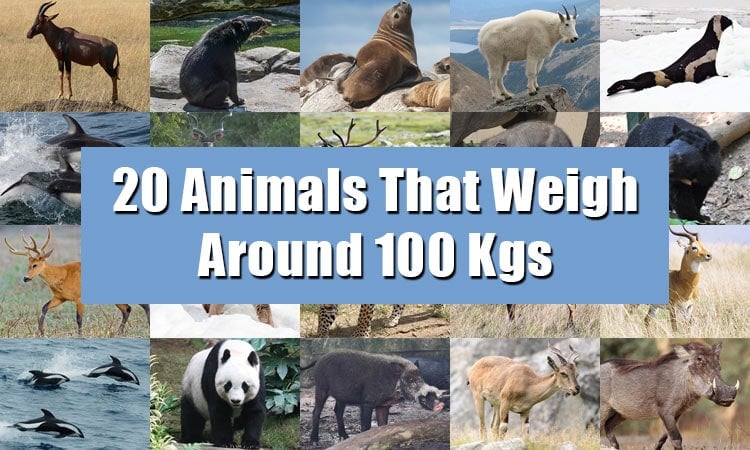The weight of a chicken is not a simple question to answer. There are so many different factors that influence the weight of a chicken. While the one that you roast for dinner weighs a certain amount, the one that laid the eggs for your breakfast weighs a totally different amount.
If you came here for a simple answer, here it is.
What is the weight of a whole chicken? The average weight of a whole chicken in 2020 is between 5 and 10 pounds (2-4.5 kg’s). Things such as breed, age, weight, and gender all play a part in the weight of a chicken.
Alright, time for the details. Below we will discuss many of the different factors that contribute to the weight of a chicken. As well as giving you what you came here for: the numbers.
We’ll start off with the chicken that you see the most often. The one in the frozen foods section at the grocery store.
The Meat Chicken
The Cornish Cross Broiler is the most popular chicken for the commercial meat market. They reach an average of 6 pounds (just under 3 kg) in a quick 4-6 weeks. Keep in mind that this is the weight when the bird is whole. The weight in the grocery store will be lighter.
They are so popular because of how fast they grow. Some may grow heavier, but most don’t get to live much longer than that.
The Egg Layer

The Golden Comet hybrid hen is the most popular for egg laying operations. The rooster can weigh up to 6 pounds (2.7 kg’s) and the hen usually comes in at 4 pounds (1.8 kg’s).
What many people don’t know is that not all chickens lay eggs. While others, like the Golden Comet, lay upwards of 280-330 eggs a year.
The Overachiever
The Rhode Island Red is a true overachiever. Weighing in at 6.5-8.5 pounds (3-4 kg’s) depending on their gender, they are raised for both their eggs and meat. The hens are said to lay 200-300 eggs a year.
The Big Guy

The Jersey Giant is often believed to be the heaviest chicken breed. They commonly weigh in at 13-15 pounds (6-7 kg’s). However, there is a Brahma chicken named Merakli that clocks in at 16 pounds (7.7 kg) which is believed to be the heaviest chicken alive.
The Little Guy
The Serama from Malaysia takes the lightest title. Most often weighing in at a mere 1 pound (500 grams) with some individuals only reaching half that.
Bantams is the term commonly used for small chicken breeds and they usually weigh between 1 and 2.5 pounds (0.5-1 kg).
The Newborn
Are chickens born? Or just hatched? That’s a question that this post won’t answer. What this point will answer is that the average chick today weighs only 1.5 ounces or 44 grams.
Have they always weighed the same?
Did you know that the average weight of a chicken today is a lot different to 50 years ago? Over the decades, the average weight of a chicken has changed a lot.
Chickens are bred most often for either egg production or for meat. As you might imagine, this factor influences the weight of the particular breed. And for a number of reasons, including selective breeding, chickens have become much heavier.
Why has it changed so much?
Selective breeding is the practice of breeding only chickens that have a particular trait that you want to replicate. So if you want a chicken with red feathers, you only breed chickens with red feathers. That way, there is more chance that the baby chickens will only have red feathers. The more you do this, the more chance you will have of only getting red feathered chickens from a fresh batch.
So what does this mean for the weight of a chicken? Well as you might have guessed, breeders have been selectively breeding the biggest chickens since about the 1920’s. This means that the chickens we have today are A LOT heavier than the chickens in the 20’s. Selective breeding isn’t the only reason that chickens have gotten bigger. Other reasons include:
- Better living conditions
- Less diseases
- Healthier nutrition
- Daily care by farmers
- Better access to vets
So not only are chickens bigger now, they are also healthier. Which means they grow faster. There is some debate about whether or not steroids and hormones are added to chickens to increase their size. So you have to choose who you believe in that argument.
So what are the differences?
In 1957 a hatchling weighed 34 grams. Today that hatchling weighs 44 grams. On top of that, in 1957 the hatchling was 4x more likely to die in its first 7 days. This is credited to the vaccinations and vet care that chicks receive today.
At 28 days, the 1957 chicken weighs 11 ounces (314 grams) while today’s chicken weighs 49 ounces (1396 grams).
Here comes the amazing part. At 56 days the 1957 chicken weighed 31 ounces (905 grams) while today’s chicken weighs 148 ounces (4.2 kg’s). That’s an increase of over 364%. Today’s chicken would also be market ready and is big enough to feed 6 people. Whereas the 1957 chicken would still have 12 days before it was market ready and would only feed 2 people. Now that’s an impressive increase.
Bird brained
How about this extra fact. There are more chickens in the world than any other type of bird. A staggering 23.7 billion as of 2018. That’s a lot of chicken wings. And a lot of eggs.
As you can see, chickens of today grow much faster and much bigger than the chickens of 1957. And now you know all the different factors that determine how heavy a chicken is.






